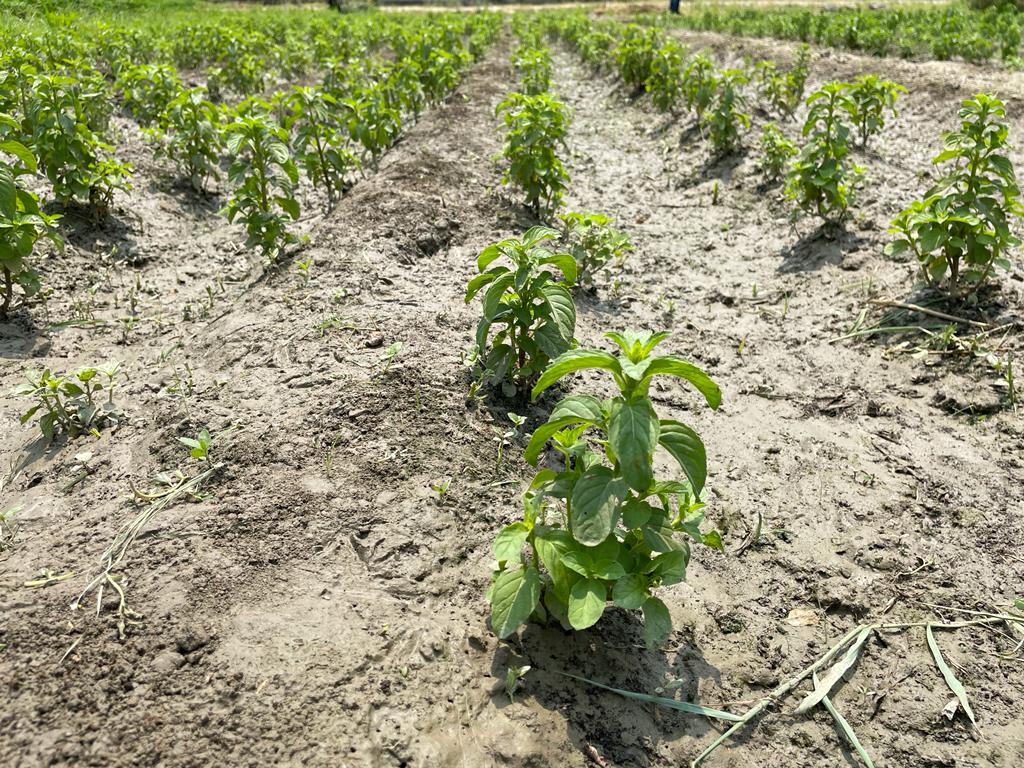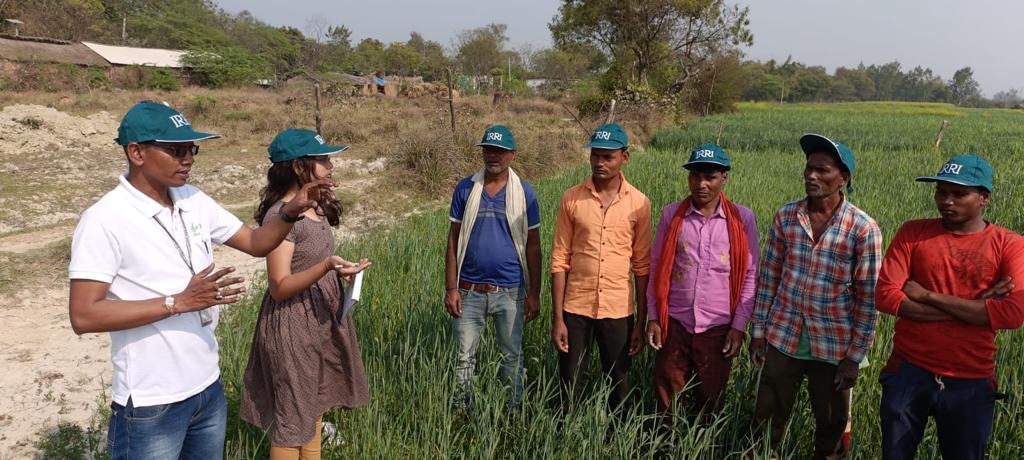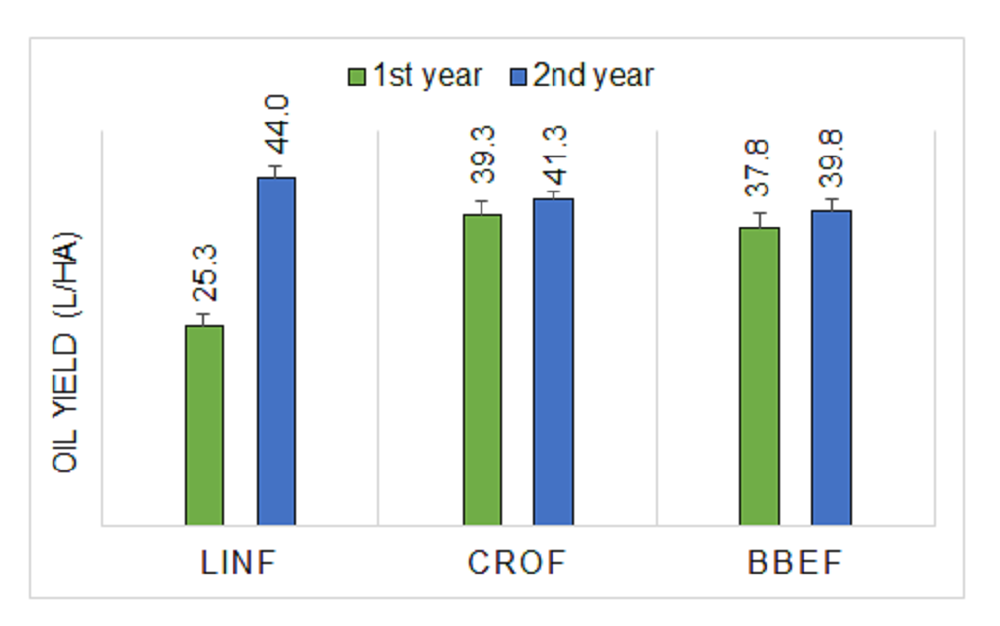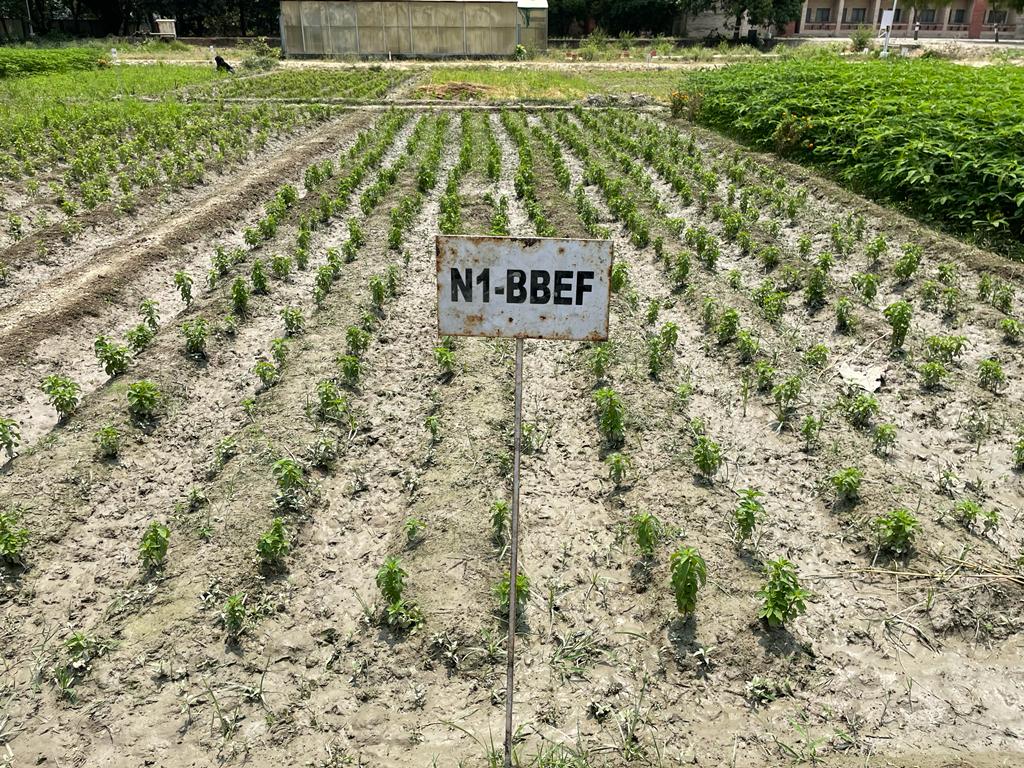Farmers in the Barabanki Region of Uttar Pradesh started cultivating peppermint to improve their profits. Peppermint is a short-term cash crop that fits well with traditional farming systems such as paddy-mustard-peppermint and paddy-potato-peppermint without conflicting with the prevailing cropping system. However, there are some challenges associated with incorporating peppermint into farming practices. Proper management practices, including irrigation, fertilization, and pest control, are necessary for peppermint to thrive. Farmers may need to invest time and resources into learning these practices to ensure the success of their peppermint crops.

Peppermint is a short-term cash crop that fits well with traditional farming systems such as paddy-mustard-peppermint and paddy-potato-peppermint without conflicting with the prevailing cropping system. (Photo: ISARC)
.
Farmers predominantly follow the rice-based cropping system in various regions of India. However, the continuous practice of rice-based cropping systems causes soil depletion, pest and disease outbreaks, and weed infestation. The introduction of crop diversification could mitigate the adverse impact of monocropping on the environment.
Crop diversification is cultivating different crops on the same piece of arable land. It enhances farm productivity and soil biodiversity disrupts the pest and disease cycle, and helps farmers obtain additional income in the event of crop failure.
Farmers in the Barabanki Region of Uttar Pradesh are taking crop diversification to the next level by growing three crops yearly because of assured irrigation, market linkages, and a conducive environment. They grow rice during the Kharif season and wheat, mustard, and potatoes during the rabi season.
Peppermint: A cash crop with multiple benefits
Farmers started cultivating peppermint, a cross between watermint and spearmint, to improve their profits. Peppermint is a short-term cash crop that fits well with traditional farming systems such as paddy-mustard-peppermint and paddy-potato-peppermint without conflicting with the prevailing cropping system. It is grown by 80% of farmers in Vishnupura, Barabanki, using a traditional cropping system. In Barabanki, farmers primarily use three peppermint varieties, CIM-Unnati, Kosi, and Punjab Gold.
Peppermint cultivation has several advantages and benefits. According to farmers, the crop has natural pest-repellent properties that can help deter pests and reduce the need for chemical pesticides. Thus, they save money on pesticide products and reduce their environmental impact simultaneously.
Peppermint can also increase soil organic matter and because of its deep root system, it helps reduce erosion, increase water retention of the soil, and improve soil health. These can help improve overall crop yield and reduce the need for synthetic fertilizers.
Farmers in Vishnupura grow peppermint for oil extraction. Peppermint provides an additional source of income by selling its essential oils and dried leaves. CIM-Unnati gives optimum production in their region (~150 l/ha), according to the farmers.
Promising cash crop with room for improvements
Suresh Chandra Yadav, a progressive farmer from Vishnupura, has been practicing mint cultivation for 15 years. Along with selling peppermint oil, he also sells mint root divisions for propagation. Mr. Yadav distributes his produce in Sitapur, Lakhipur, Bareli, Balrampur, and Ayodhya Districts.
“I receive a net profit of, around USD 1000-1500/ha, by selling peppermint oil extract,” he said. He also emphasized a promising future in peppermint cultivation with the increasing demand for peppermint products that will help farmers to improve their incomes.
However, there are some challenges associated with incorporating peppermint into farming practices. Proper management practices, including irrigation, fertilization, and pest control, are necessary for peppermint to thrive. Farmers may need to invest time and resources into learning these practices to ensure the success of their peppermint crops.

Researchers at ISARC proactively generates evidence on the suitability of peppermint’s cropping system under alternate natural farming systems. (Photo: ISARC)
.
Identifying cropping system suitability for peppermint
The International Rice Research Institute -South Asia Regional Centre (ISARC) in Varanasi, Uttar Pradesh, proactively generates evidence on the suitability of peppermint’s cropping system under alternate natural farming systems. These include Low-input natural farming (LINF), Climate-resilient organic farming (CROF), and Biochar-based ecological farming (BbEF).
The study conducted at ISARC for 2-years showed that peppermint oil yield significantly increased during the second year compared to the previous year for all three alternate farming practices. The highest increase in yield was observed in LINF (42.7%), followed by CROF (5.90%) and BbEF (5.0%) practices. (See Figure 1).

Figure 1. Changes in the oil yield of peppermint under alternate natural farming systems
.
These results suggest that the LINF practice is the most effective of the three alternative farming methods for improving peppermint oil yield and farmers’ income.
Peppermint varietal evaluation
Still, there is a need to conduct a varietal evaluation for sustainable and profitable peppermint cultivation. ISARC identified low-input responsive peppermint varieties (CIM-Unnati, Kosi, Punjab Gold, and Golden hybrid) under LINF, CROF, and BbEF alternate farming practices. We look forward to disseminating the results of peppermint varietal evaluation under different farming practices to help farmers maximize the potential of peppermint as a cash crop.

Natural peppermint cultivation is a sustainable and environment-friendly farming practice that can promote healthy ecosystems. (Photo: ISARC).
The way forward
Natural peppermint is of higher quality than conventionally grown peppermint due to the absence of chemical residues and the higher levels of beneficial plant compounds. As a result, natural peppermint is increasingly in demand among health-conscious consumers and the food industry, yet, the price is the same. Therefore, policy intervention is required to offer incentives for producing peppermint naturally as subsidized chemical fertilizers are not being used.
Overall, the benefits of natural peppermint cultivation far outweigh the challenges. It is a sustainable and environmental-friendly farming practice that can help promote healthy ecosystems and provide high-quality, healthy products for consumers.
Related articles:
Reducing pesticides and increasing crop diversification offer ecological and economic benefits for farmers—a case study in Cambodian rice fields
To increase incentives for farmers, the selection of surrounding plants should integrate information about farmers’ choices to increase potential adoption by farmers. The proper implementation of EE in combination with farmers’ choice of crops is a promising solution towards sustainable rice production.
Crop diversification in rice-based systems in the polders of Bangladesh: Yield stability, profitability, and associated risk
Bangladesh is ranked among the top 10 most climate-vulnerable countries in the world. Therefore, finding a resilient crop and cropping system is the top priority for food security and improved livelihood of the climate-vulnerable communities of the coastal zone.
Impact of cropping system diversification on productivity and resource-use efficiencies of smallholder farmers in south-central Bangladesh
The government of Bangladesh has supported land-use intensification, with an initial focus on rice which now covers 78% of total arable land. While this helped Bangladesh achieve self-sufficiency in rice production, policymakers have long understood the negative effects of rice-based systems on water consumption, carbon and energy footprints, and loss of diversity in crops and wildlife. Hence, the government proposed a crop diversification policy as early as 1989. This study conducted a multi-criteria assessment of coastal smallholder cropping systems in southern Bangladesh to investigate opportunities for improving the dominant current system of low-input, low-productivity aman-season rice.







